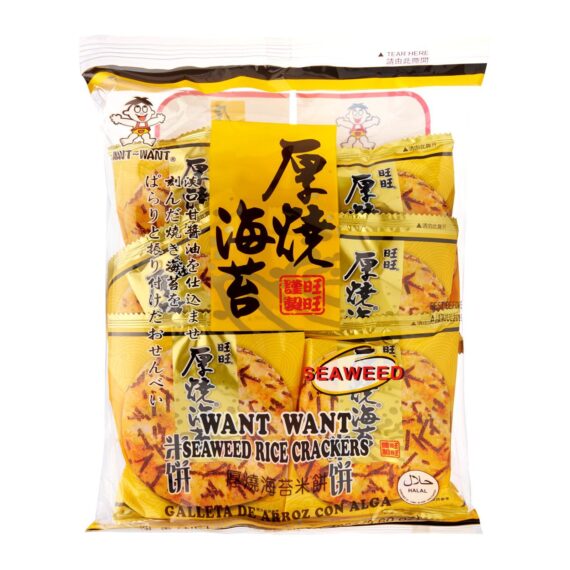The Delicious Snack – Senbei Rice Crackers
Senbei rice crackers are a traditional and popular Japanese snack known for their crispy texture and versatility. Dating back to the Heian period in the 8th century, these rice crackers have evolved over time but still retain their simplicity and deliciousness. Let’s take a deeper look into the world of senbei and what makes them such an enduring part of Japanese food culture.
Origin and Development
The origin of senbei can be traced back to the Nara period in the 8th century when dried rice crackers were first produced. These early versions were very plain and simply salted rice crackers. During the Heian period, techniques for producing senbei improved and flavors were experimented with. Soy sauce became a popular seasoning added to senbei around this time, giving the crackers their signature savory taste.
In the Edo period beginning in the 17th century, specialized senbei shops opened that focused on creating innovative flavors and shapes. Shirosenbei crackers became popular, which were made from steamed rice and seasoned only with salt for a more delicate taste. Regional variations of senbei also emerged across Japan, reflecting local ingredients and cooking styles. To this day, traveling around Japan reveals diverse senbei flavors unique to different areas.
Types of Senbei
With centuries of refinements, there is huge variety in senbei crackers today. Some of the most common types include:
– Shirosenbei – As mentioned, these are plain white rice crackers seasoned only with salt.
– Kurosenbei – Made from rice bran or brown rice giving them a darker color. Often contain sesame seeds or miso for layered flavors.
– Niboshi senbei – Contain dried anchovies/sardines for umami richness. Great as a savory snack.
– Shiso senbei – Seasoned with perilla leaves imparting an herbaceous aroma and subtle flavor.
– Kinako senbei – Made with roasted soybean flour creating a toasted peanut-like taste.
– Natto senbei – Topped with fermented soybeans for those who love their strong flavor.
– Karinto – A softer puffed senbei often sandwiched with sweet azuki bean paste inside.
With constant innovation, senbei have evolved to suit all kinds of tastes from mild to intense, plain to creative, and sweet to savory. Even unique flavors like curry rice senbei can now be found.
Nutritional Value and Health Benefits
Being made primarily from rice, senbei are low in calories and fat. They provide substantial amounts of carbohydrates to fuel the body along with modest amounts of protein. The fiber content aids digestion and keeps one feeling full.
Beyond basic nutrition, senbei offer specific health advantages. Rice bran contains gamma-oryzanol which supports cardiovascular health and cholesterol levels. Some senbei are great sources of calcium for bone strength too. Their texture makes senbei easy to chew, appealing to people with dental issues. Natto senbei in particular provides beneficial bacterial cultures. Overall, senbei are a deliciously nutritious snack.
Role in Japanese Culture
Senbei hold significant roles in Japanese culture beyond just enjoyment as a snack food. They are often given as small gifts, particularly during festivals and holidays. This tradition may have originated from offering senbei to Shinto gods.
The rice crackers are commonly found at Japanese temples and shrines for worshippers to enjoy. Regional variations of senbei also reflect cultural identity and pride. Senbei feature prominently in Japanese literature and artworks too, referenced in poems and appearing in woodblock prints.
Today, senbei shops can still be found all over Japan with their distinctive mortar pestle logo. Partaking in senbei is seen as a way to experience Japan’s long food heritage wherever one may be. The humble rice cracker has certainly stood the test of time within Japanese culture and cuisine.
From humble beginnings over a thousand years ago, senbei rice crackers have spread far and gained immense popularity across Japan and beyond. Their versatility, nutrition and cultural significance are what make senbei endure as an iconic snack. Whether one opts for traditional flavors or innovative varieties, these crispy treats give the perfect light bite any time of day. With constantly new innovations in senbei, their future popularity seems secured for generations more to come.
Note:
1. Source: Coherent Market Insights, Public sources, Desk research
2. We have leveraged AI tools to mine information and compile it

